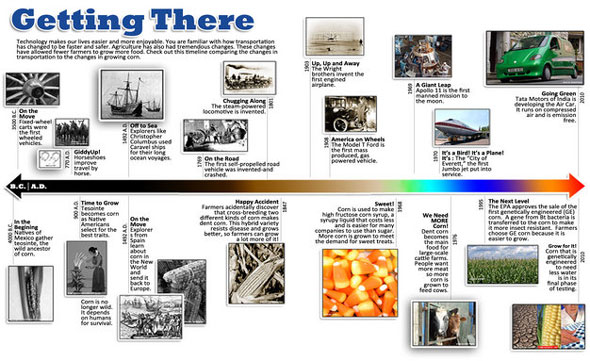| Aug 23, 2012 |
History of agricultural biotechnology: How crop development has evolved
|
|
(Nanowerk News) Have you ever wondered where our agricultural crops come from? And what were they like thousands of years ago, or hundreds of years ago? Our food crops today are in fact very different from the original wild plants from which they were derived.
|
|
About 10,000 years BC, people harvested their food from the natural biological diversity that surrounded them, and eventually domesticated crops and animals. During the process of domestication, people began to select better plant materials for propagation and animals for breeding, initially unwittingly, but ultimately with the intention of developing improved food crops and livestock. Over thousands of years farmers selected for desirable traits in crops, and thus improved the plants for agricultural purposes. Desirable traits included crop varieties (also known as cultivars, from "cultivated varieties") with shortened growing seasons, increased resistance to diseases and pests, larger seeds and fruits, nutritional content, shelf life, and better adaptation to diverse ecological conditions under which crops were grown.
|
|
Over the centuries, agricultural technology developed a broad spectrum of options for food, feed, and fiber production. In many ways, technology reduces the amount of time we dedicate to basic activities like food production, and makes our lives easier and more enjoyable. Everyone is familiar with how transportation has changed over time to be more efficient and safer (Figure 1). Agriculture has also undergone tremendous changes, many of which have made food and fiber production more efficient and safer (Figure 1). For example in 1870, the total population of the USA was 38,558,371 and 53% of this population was involved in farming; in 2000, the total population was 275,000,000 and only 1.8% of the population was involved in farming. There are negative aspects to having so few members of society involved in agriculture, but this serves to illustrate how technological developments have reduced the need for basic farm labor.
|
 |
| A timeline showing how human transportation systems have evolved. Corresponding advances in agricultural biotechnology are shown below, similarly illustrating how advances changed our ability to develop new agricultural crops.
|
|
This article concentrates on how scientific discoveries and technological developments have allowed us to improve crop development in agriculture. Most people do not realize that among early agriculture developments, really at the genesis of agricultural technology, the ancient Egyptians made wine and made rising dough for bread, using fermentation. A significant event in the development of agriculture occurred in 1492 with the introduction of corn, native to the Americas, to the rest of the world, and European growers adapted the plant to their unique growing conditions. At this stage of history, crops were being transported around the world and grown under a diversity of conditions.
|
|
Read the full article here in Nature Education.
|

